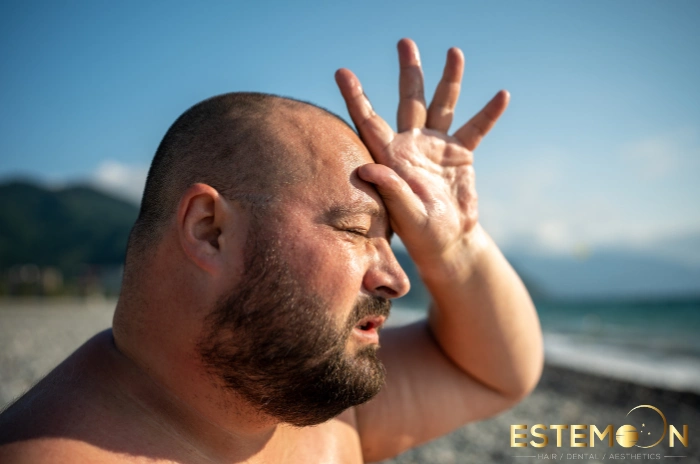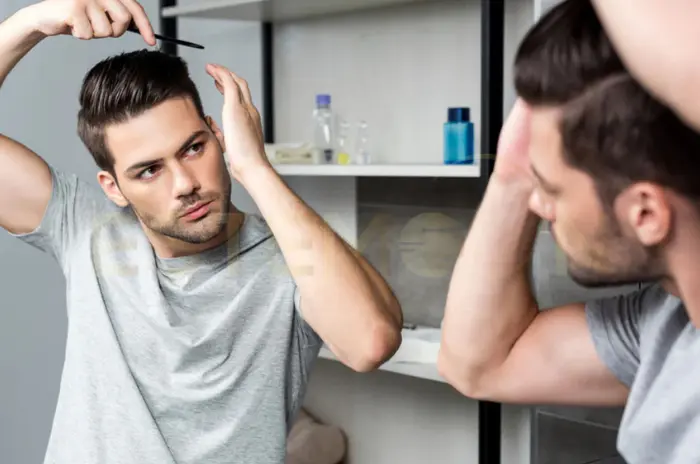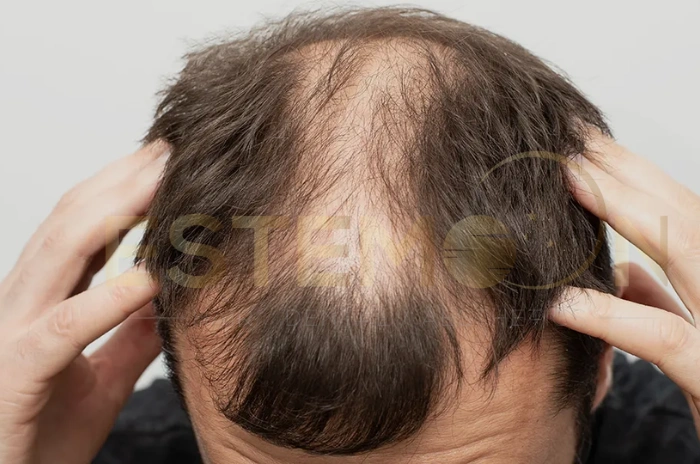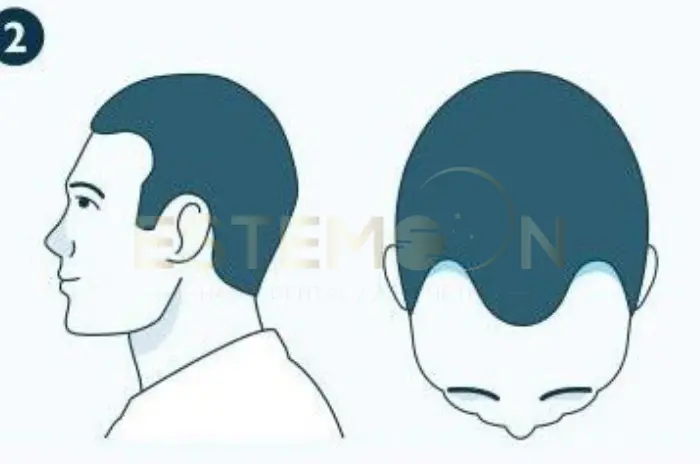How Does Sun Affect Hair Transplant?
After a hair transplant, the scalp is highly sensitive and exposed to the environment. Sunlight, particularly its ultraviolet (UV) component, can significantly damage newly implanted hair follicles.
UV Rays and Hair Follicle Sensitivity
The UV rays from the sun can penetrate the skin’s surface and reach the dermis layer where new follicles are settling. This can cause oxidative stress, delaying healing and weakening the implanted grafts.
Post-Surgery Inflammation and Sun Exposure
Following surgery, the scalp is already inflamed. Direct exposure to sunlight can increase inflammation, redness, and irritation, leading to discomfort and slower recovery.
Color Changes and Scalp Pigmentation
UV damage can cause uneven pigmentation or darkening of the healing scalp. This may leave long-term discoloration in the transplanted region if sun exposure is not minimized.
Can Heat Damage Hair Transplant?
Yes, exposure to high temperatures—even without direct sunlight—can harm your results. Heat causes the blood vessels in your scalp to dilate, which can increase swelling and disrupt healing.
Effect of Sweating on Healing
Sweating due to heat may interfere with graft adherence and increase infection risk. A clean, dry scalp is essential in the first few weeks.
Sauna, Steam, and Hot Showers
Post-operative patients are advised to avoid steam rooms, saunas, and long hot showers during the initial healing phase. Heat and moisture soften scabs prematurely and affect graft security.
Outdoor Activity and Climate Consideration
Even without sun, being in hot environments (like summer in Turkey) can damage a fresh hair transplant if proper precautions aren’t taken.
Can Sunburn Ruin My Hair Transplant?
Sunburn is among the most harmful outcomes for a newly transplanted scalp. It not only damages the outer skin layer but can also negatively impact underlying follicle health.
Sunburn-Induced Scarring
Blistering from sunburn can lead to permanent scars, making the area unsuitable for future grafts and affecting overall aesthetics.
Graft Rejection Risk
Severe sunburn may compromise blood flow to the newly implanted follicles, increasing the risk of graft rejection or poor hair growth.
Increased Healing Time
A sunburned scalp will take longer to heal. This delay can affect the success rate of the transplant and result in uneven hair growth.
How Can I Prevent Sunburn After the Operation?
Preventing sunburn is critical in the first few months after a hair transplant. You should take practical steps to protect your scalp.
Use of Physical Barriers
A lightweight, breathable hat provides essential shade and keeps the scalp protected from direct UV exposure.
Avoiding Peak Sun Hours
The sun’s intensity is strongest between 10 a.m. and 4 p.m. Staying indoors during this window is advisable for the first 2–4 weeks.
When to Use Sunscreen
After the initial healing phase (around 3–4 weeks), your doctor may recommend applying non-comedogenic, SPF 30+ sunscreen to your scalp.
Protecting Your Hair Transplant
Maintaining the integrity of your hair transplant requires a proactive approach to environmental hazards.
Adherence to Clinic Aftercare
Every reputable Turkish clinic provides detailed post-op instructions. These must be followed carefully to avoid any complications.
Avoiding Physical Irritation
In addition to sun, rubbing or scratching the scalp can damage healing follicles. Be gentle while washing and drying the area.
Importance of Early Recovery Period
The first 10–14 days are critical for follicle anchoring. Avoiding external stressors like sun, wind, and pollution is vital during this time.

Why Should You Avoid Sun Exposure After Hair Transplant?
Avoiding hair transplant sun exposure isn’t just about comfort—it’s about safeguarding your investment and long-term results.
Protection of Skin Integrity
UV rays break down skin proteins and delay wound healing. A compromised scalp surface may not support follicle survival.
Cosmetic Concerns
Sun-exposed healing skin may scar more noticeably or develop uneven tone, making your results less aesthetically pleasing.
Scientific Backing
Multiple dermatological studies confirm that sun exposure slows down recovery and reduces the effectiveness of skin graft procedures, including hair transplants.
How Long Should You Avoid Hair Transplant Sun Exposure?
Doctors typically recommend avoiding direct sunlight for at least 2–4 weeks after the procedure, with continued caution for up to 3 months.
Staged Return to Outdoors
Weeks 1–2: Complete avoidance Weeks 3–4: Light shade only Month 2+: Gradual reintroduction with protection
Extended Precaution for Sensitive Skin Types
Fair-skinned or sensitive individuals should be extra cautious, extending sun avoidance or using hats and SPF until the 6-month mark.
When It’s Safe to Resume Sunbathing
Only after the scalp has fully healed (typically after 3 months) can you expose it to the sun—and even then, brief exposure with SPF is advised.
How to Recognize Sun Damage on a Hair Transplant?
Spotting sun damage early can help prevent long-term complications.
Physical Signs
Look for redness that doesn’t fade, scaling, blistering, or a burning sensation.
Hair Growth Interruption
If your transplant shows patchy regrowth or feels more sensitive than usual beyond 2–3 weeks, sun damage may be the cause.
When to Contact Your Clinic
Any discomfort accompanied by swelling or pus could signal infection or sun-induced trauma—consult your surgeon immediately.
The Dangers of UV Rays for Post-Operative Skin
UV rays can cause genetic mutations, increase cell death, and reduce collagen production—all of which are detrimental to healing tissue.
Collagen Breakdown
Collagen is essential for skin repair. UV rays degrade collagen, resulting in slower wound closure and graft integration.
Delayed Revascularization
Grafts need blood supply to survive. UV damage interferes with the scalp’s ability to rebuild capillaries, threatening follicle survival.
Accelerated Skin Aging
Exposure too early can also cause premature aging in the treated area, affecting the look of your transplant.
Why Is the Skin More Sensitive After a Hair Transplant?
The procedure involves micro-incisions, swelling, and sometimes numbing agents—all of which heighten the skin’s sensitivity.
Healing Phase Involves New Cell Growth
Your skin is regenerating post-surgery. This process increases photosensitivity, meaning even light exposure can irritate it.
Loss of Natural Barrier
The trauma temporarily weakens your skin’s protective barrier, leaving it more prone to sunburn and dehydration.
Increased Blood Flow in Treated Area
Inflammation increases blood circulation, making the area more reactive to heat and UV radiation.
How Do You Protect Yourself from the Sun After a Transplant?
Post-operative sun safety is all about layering your protection.
Best Hat Types
Opt for wide-brimmed hats or loose-fitting baseball caps made from breathable cotton.
Gradual Reintroduction to Outdoors
Start with short durations outside in shaded environments, gradually increasing exposure over several weeks.
Clinic-Approved Sunscreens
Only apply sunscreen after your surgeon confirms it’s safe—usually after the donor and recipient sites have fully scabbed over.
Skin Sensitivity After Surgery
Scalp skin is tender, inflamed, and exposed in the days following your transplant. This sensitivity makes it more vulnerable to environmental stressors.
Healing Time Varies By Patient
On average, sensitivity reduces after 2 weeks, but full normalization may take up to 3 months.
Special Care Products
Clinics often recommend saline sprays, mild cleansers, and moisturizers specifically designed for post-transplant care.
Red Flags
Persistent redness, flaking, or discomfort beyond 3 weeks should be assessed by a medical professional.

FAQs About Hair Transplant Sun Exposure
How soon can I go out in the sun after a hair transplant?
It’s best to avoid direct sun exposure for at least 2 to 4 weeks after your hair transplant. Always wear a hat or stay in the shade when outside.
Can the sun damage my new hair grafts?
Yes. UV rays can damage healing skin and harm transplanted hair follicles, possibly reducing the success of your transplant.
Is it safe to use sunscreen after a hair transplant?
You should wait at least 3–4 weeks before applying sunscreen. Use a doctor-approved SPF product designed for sensitive skin.
What are the signs of sun damage on my scalp?
Watch for redness, stinging, peeling, or delayed healing. Contact your clinic if you notice any discomfort beyond the usual recovery signs.
What type of hat should I wear after a hair transplant?
Wear a soft, breathable, and loose-fitting hat that does not rub against the scalp. Avoid tight caps or anything that puts pressure on the grafts.
Can sunburn ruin a hair transplant?
Yes. Sunburn can cause blisters, scarring, and even graft failure. Protect your scalp diligently until it’s fully healed.
Follow us on social media for updates, tips, and patient success stories:



